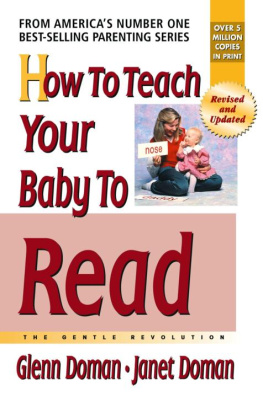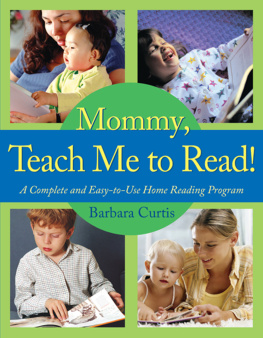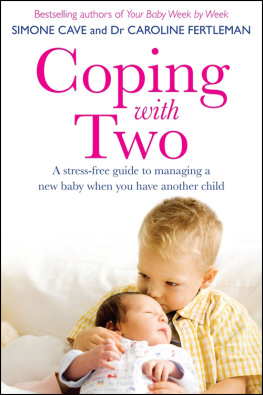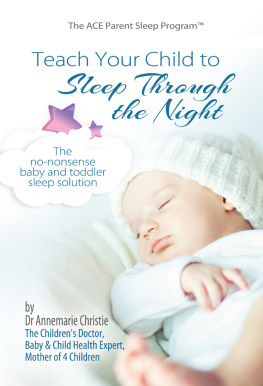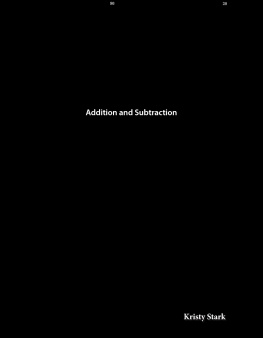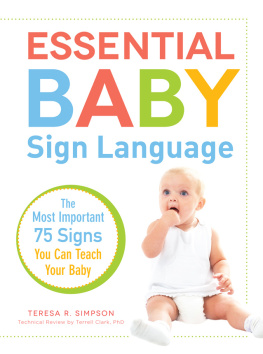works by the authors
The Gentle Revolution Series
How Smart Is Your Baby?
How To Teach Your Baby To Read
How To Teach Your Baby Math
How To Give Your Baby Encyclopedic Knowledge
How To Multiply Your Baby's Intelligence
How To Teach Your Baby To Be Physically Superb
How To Teach Your Baby To Swim
What To Do About Your Brain-Injured Child
Children's Books
Nose Is Not Toes
Enough, Inigo, Enough

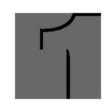



vii
xi
The author wishes to thank the following publishers for their kind permission to quote from copyright material:
Newsweek, Vol. LXI, No. 19 (May 13, 1963), p. 96.
The Bobbs-Merrill Company, Inc., for excerpts from Natural Education by Winifred Sackville Stoner, copyright 1914 by The Bobbs-Merrill Company, 1942 by Winifred Stoner Gordon.
Stanford University Press, for excerpts from The Promise of Youth: Follow-up Studies of a Thousand Gifted Children, Genetic Studies of Genius, Volume III, by Barbara Stoddard Burks, Dortha Williams Jensen, and Lewis M. Terman (Stanford: Stanford University Press, 1930), pp. 248-50.
Harvard University Press, for brief quotation from Plato's Republic, translated by Paul Shorey (the Loeb Classical Library; Harvard University Press), p. 624.
Saturday Review, for brief excerpts from an article by John Ciardi, entitled "When Do They Know Too Much?" (May 11, 1963).
This book first saw the light of day in 1964. It was the very beginning of the Gentle Revolution. Pioneering mothers and fathers embraced the book. Those first parents recognized that this was a real adventure. While Man was just venturing into outer space our parents took the very first steps into inner space-the vast and quite miraculous world of brain growth and development of the tiny child. Those parents knew that tiny children were a great deal more intelligent than most people thought they were. They rolled up their sleeves and got started, and what a wonderful job they have done.
Since that time five million copies have been sold in twenty-two languages, with more on the way. All of the things we said in that original edition seem to be as true today as they were forty years ago.
Only one thing has changed.
Today there are tens of thousands of children, ranging from babies to adults, who learned to read at an early age using this book. As a result, thousands and thousands of mothers have written to us to tell us of the pleasure, joy, and excitement they have experienced in teaching their babies to read. They have related their experiences, their exultation, and occasional frustrations. They have described their victories and their innovations. They have asked a great many penetrating questions.
These letters contain a treasure trove of priceless knowledge and splendid insight into tiny children.
They also constitute the greatest body of evidence in the history of the world that proves beyond question that tiny children can learn to read, should learn to read, are learning to read, and, most important of all, what happens to them when they go to school and when they grow up.
This precious body of knowledge is what made this new edition not only important but vital to the new generation of parents who have their children's lives as a top priority.
Chapter 7 is changed substantially from the original book-not to change any of the principles laid out earlier, but rather to fine-tune them in light of the vast experience that parents from around the world have had in following these principles.
Chapter 8 is entirely new from the original and details a precise approach to starting a child at each of the significant ages: newborn, infant, tiny baby, baby, and little child.
Chapter 9 is also entirely new and answers the two most commonly asked questions about teaching babies to read:
1. "What happens to them when they go to school?"
2. "What happens to them when they grow
Here are the answers to these questions from the parents themselves. They do not deal with theoretical children with theoretical problems (so beloved of professionals) -they deal with very real opportunities afforded to very real children by very real and splendid parents.
For the new parent about to join this gentle revolution, welcome.
Go joyously, go like the wind, and enjoy every minute with your child.
There are no chauvinists at The Institutes, either male or female. We love and respect mothers and fathers, baby boys and baby girls. To solve the maddening problem of referring to all human beings as "grown-up male persons" or "tiny female persons," we have referred most often throughout this text to all parents as mothers, and to all children as boys.
Seems fair.
Beginning a project in clinical research is like getting on a train with an unknown destination. It's full of mystery and excitement but you never know whether you'll have a compartment or be going third class, whether the train has a diner or not, whether the trip will cost a dollar or all you've got and, most of all, whether you are going to end up where you intended or in a foreign place you never dreamed of visiting.
When our team members got on this train at the various stations, we were hoping that our destination was better treatment for severely brain-injured children. None of us dreamed that if we achieved that goal, we would stay right on the train till we reached a place where brain-injured children might even be made superior to unhurt children.
The trip has thus far taken a half-century. The accommodations were third class and the diner served mostly sandwiches, night after night, often at three in the morning. The tickets cost all we had, and while some of us did not live long enough to finish the trip none of us would have missed it for anything else the world has to offer. It's been a fascinating trip.
The original passenger list included a brain surgeon, a physiatrist (an M.D. who specializes in physical medicine and rehabilitation), a physical therapist, a speech therapist, a psychologist, an educator, and a nurse. Now there are more than a hundred of us all told, with many additional kinds of specialists.
The little team was formed originally because each of us was individually charged with some phase of the treatment of severely brain-injured children-and each of us individually was failing.

